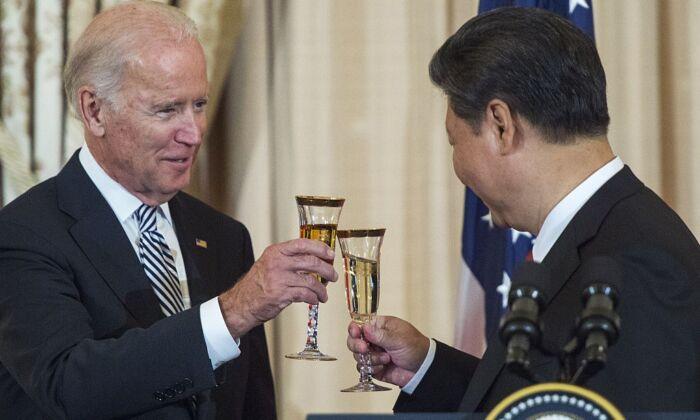Chinese manufacturing brings to the world a double edged sword: sheer pleasure in affordable shopping, and painful witness of closed factories. The world seems to have become used to those Made-in-China wares and gadgets that are quite inexpensive to purchase, albeit they do not last for too long. Well, one gets what one paid for, so as long as one can buy repeatedly those low-cost items, the endurance or life span of the products become secondary. But this trend may not last for too long if Donald Trump, the Republican presidential candidate, gets to move from his new luxury hotel in Washington D.C. to 1600 Pennsylvania Ave next January. Trump International Hotel Washington, D.C. is, by the way, at 1100 Pennsylvania Ave.
The closed or deserted factories in Ohio and Michigan have become so prominently displayed in front of the American public thanks to the hotly exchanged debates between Trump and Clinton. Chinese exports to America and Chinese manufacturing behind those exports, while still being the top economic concerns of Chinese leadership, have now become a conundrum and hot potatoes to both countries across the Pacific.
A report by Washington Post said that China is going to lose again in the competition among manufacturers from all over the world, as China is suffering from a lack of skilled workers and an increase in labor costs, labor force turbulence and others. After 30 years of uneven and accelerated growth fueled by an astonishing boom in real estate and infrastructure buildup, the Chinese economy simply lost its stamina. Global companies are shifting their value-added manufacturing plants back to the U.S. and Europe.
It’s alarming while the Chinese economy is entering a stagnation and social unrests and conflicts skyrocketing, the mood among many in China ballooned to a new height with irrational self-aggrandizement. The Chinese media, especially online media, under silent consent of the regime, started a new round of puffery and braggadocio over how capable Chinese industry and manufacturing has been, exemplified by the recent boasting of so called “quantum communication satellite”, which is nothing more than a test of encryption attempt using quantum theory and has nothing to do with satellite technology whatsoever.
The Chinese government has also mobilized to develop its space industry, but insiders could tell immediately that while China is capable to produce engines to boost its rockets, its jet engine to power its fighter plane is yet to show much promise. While China is still following the Soviet style effort to put man in space, near earth space industry in the U.S. has been shifted to private enterprises.
Communist leaders in China are not only attached to their power, but also attached to the “effectiveness” of using such state power, in everything from birth control to ramjet engine to even science research. Back in 1970-1980’s, there was a meteorite shower in Jilin Province in northeast China. Since this was a rare astronomical phenomenon during the Cultural Revolution era, the regime found this could be used to boost the status of China in international science community. A large scale, state-led effort to study meteorites was launched and many articles published, yet the fad soon faded and research activities abated. German experience told us, state supported private research and prosperity of private research institutions, contributed to German success in technology and especially in manufacturing.
Yet things made in Germany do not always have such prestige as they do today. Back when the first two world wars ended, the British adamantly requested that products imported from Germany be marked clearly as “Made in Germany”, not because those products were superior, but because they were inferior and the Brits want to differentiate them from their own. Half a century later, nobody thinks British made is superior than German made, and many countries want to imitate the German success stories with no avail. Will China be an exception then?
Recently, German company DMG closed its Shanghai operation at the end of September, citing slowing down in economic growth in China and around the world, deteriorating market conditions, low utilization rate of its capacity, high inflation, and escalating production cost.
DMG is a world leader in machine tool manufacturing, and almost all the machines in China in the high end precision manufacturing were provided by this German company. Chinese automobile, cell phone, and appliance industries all depend on DMG for their machineries. It can be said that DMG is the foundation of the foundation of Chinese manufacturing. The exit of DMG from China is no doubt a big blow to the current state of manufacturing in China. Chinese state planners’ ambition of “Made in China 2025” campaign in robot, 3-D printing, and Internet of the Things could all fall into a crack with this new development.
In the past 20 some years, higher education in China witnessed astonishing growth without much long term and integrated planning. And, a lack of quality control and commercialization of higher education rendered Chinese post-secondary education mushrooming yet the overall structure is completely skewed, with vocational education and trade schools prominently mislaid. Many junior college and technical schools “upgraded” blindly to 4-year college and that lead to a decline in the quality of higher education in China. Most notably is a resultant lack of skilled workers in China. When the Communists were seeking power and solidifying their grip of power, they labeled factory workers as “pioneers of the bourgeois”; and when they firmly got hold of power in China and did not need the support of workers, the blue collar workers of China became the laggards, not pioneer anymore. The social status of blue collar workers went on a downward spiral in the past two decades, and that in turn, set the stage of manufacturing conundrum and demise in China today.
The famous “dual system” of college and vocational education in Germany put emphases on both classroom teaching and factory practice, which is admired by the world. From education minister of Spain to director of industrial alliance of Great Britain, everyone wants to imitate the German Mittelstand. But indeed the German model is not that easy to replicate, as if otherwise, there would be many Germans in the word today following 30-40 years of German leadership.
Thomas Kautzsch indicated in a Harvard Business Review article in June that Germans are leading the world in automobiles, machine tools, and auto parts because they integrated the software, sensors, networks, and components of all kinds to their fullest extent, and now they are leading again in digital manufacturing in everything from auto to train to kitchen appliances.
The Economist pointed out that the German way of production is not as easily exported than their products. While a small company named Beckhoff Automation produced the control devices in half of all the wind power turbines in China, their secrets of production is not that easily copied by Chinese companies, even though the later are well known for their ability to copycat everything and anything, and Beckhoff Automation has an operation right under the nose of the Chinese – in Shanghai!
Beckhoff Automation is but one of those small to medium enterprises in Germany that comprise German Mittelstand. But their way of operation and style of management dates back 200 years! In the eyes of Hans Beckhoff, one of the four siblings that as a family control Beckhoff Automation, they own everything and borrow nothing. This is certainly in line with traditional, family owned private enterprises in China before 1949, but that is certainly not the case today, as all the leading manufacturing firms in China are state owned now and are heavily leveraged, so leveraged that their debts are suffocating them at the moment.
Steven Rattner (Foreign Affairs) also explored how America could learn from Germany, the power house of manufacturing in Europe. One thing Rattner noticed is the cooperation between German government and private companies. The other advantage of the Germans is in their producing the most fundamental, key component in everything, as what the Germans quite often like to say, “We make the thing that goes inside the thing that goes inside the thing.” Small, nimble, and adaptive German companies could focus on long term growth and market share, rather than short term profit, which is something Chinese companies will find difficult to follow or imitate.
The Germans have at least two weapons in claiming victory in the battle for the throne of world manufacturing: machine tools by small companies such as Beckhoff, and name brands by large companies from Mercedes-Benz to BMW. The Chinese manufacturing, on the other hand, pursued neither. The state own enterprises in China are large, humongous gorillas that are not good at developing niches, and contract manufacturing for global brands suffocates domestic, Chinese brands.
One last thing that may frustrate Chinese leadership is that, while state sponsored R&D seems to reside on Chinese turfs, it is the Germans who excelled in doing it: the best cooperation between public and private institution is the Fraunhofer Society, which is the driving force behind the high tech export of Germany. Even Obama administration asked for 1 billion US dollars to form a national network of innovation and cooperation after the Fraunhofer model, the same could hardly be implemented in China, largely because of the political system, bureaucracy, degree of corruption, among others…
Dr. Frank Tian Xie is John M. Olin Palmetto Professor of Business and Associate Professor of Marketing at the University of South Carolina Aiken, in Aiken, SC, USA.





